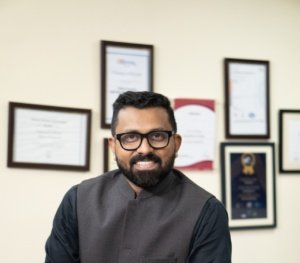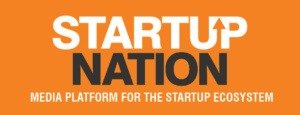
A steep hike in the H-1B visa fee has shaken Goa’s tech community, forcing a rethink of what it means to build a global career
The recent announcement by United States President Donald Trump to introduce a one-off fee of 100,000 US dollars for all new H-1B visa applications has sent ripples of anxiety through Goa’s community of aspiring technology professionals and students. For decades, the H-1B visa has been regarded as a vital pathway for Indian talent seeking to establish successful careers in America’s powerful technology sector.
The new regulation, which came into force on 21 September 2025, marks a dramatic escalation from the previous visa application costs of around 2,000 to 5,000 US dollars. For middle-class families in Goa, where the average income is modest, such an exorbitant upfront fee has placed the prospect of working in the United States far beyond reach.
For generations of Goan engineering and computer science students, particularly those at institutions such as Goa Engineering College and Don Bosco College of Engineering; the H-1B visa has represented far more than a work permit. It has symbolised access to global exposure, advanced innovation ecosystems, and the chance to uplift their families economically. That dream now appears increasingly unattainable.
Mangirish Salelkar, President, Goa Technology Association (GTA), admits that the fee could significantly restrict the flow of skilled Indian tech talent to the US, especially from smaller states like Goa. He reflects that for large companies, sending staff abroad might just become an additional compliance cost, but for smaller firms and individual aspirants, particularly from emerging hubs like Goa, it could prove a major deterrent.

“I genuinely believe this high cost will discourage many,” he explains, “but at the same time, it might push Goan professionals to look beyond the United States, to places such as South America, Europe, the Middle East or Australia. In a way, this shift could be positive. It could drive us to focus more on building global careers remotely and strengthening Goa’s own IT ecosystem.”
Many within the local technology sector see this as another reinforcement of US President Donald Trump’s hardline stance on immigration. Though the fee is a one-time payment and won’t affect current H-1B holders or their ability to travel, it still creates a financial wall for newcomers. Employers, they predict, will gradually reduce dependence on foreign workers, reshaping hiring trends across the global technology landscape.
Salelkar adds that in the short term, the change may temporarily disrupt the traditional route of Goan students heading to the US for postgraduate study or employment. Yet he feels that over time, it could help strengthen the domestic ecosystem as more talent decides to stay and grow in India. “With the National Education Policy coming into play,” he says, “our colleges have an opportunity to realign their programmes towards globally in-demand skills like artificial intelligence, cybersecurity and data science. Remote collaboration is the new norm, so international clients will still work with Goan firms. The opportunities will remain, just in a different form.”
For smaller states such as Goa, where the technology sector is still finding its feet and local opportunities remain limited compared with larger metros, the United States has long represented a land of professional promise. Many Goan students take out education loans, hoping to repay them through salaries earned in dollars. With the introduction of this new fee, that carefully plotted path now seems far less certain.
Mayur Virkar, Founder, Chairman and CEO, CodeMax IT Solutions, believes the 100,000-dollar H-1B fee is more than a policy tweak, it signals a transformation in global technology talent strategy. “As someone deeply involved in Goa’s tech ecosystem through Codemax, Scoders, and the CII IT Panel, I have seen this change brewing for some time,” he says. “US tech giants are pivoting strategically. Companies like Amazon, Microsoft and Meta, traditionally among the largest H-1B sponsors, are now focusing on only the most specialised, senior-level roles where the high visa cost can be justified.”

At the same time, these tech giants are leaning heavily into remote work through Employer of Record solutions, allowing people to contribute from their home countries without visa headaches. They are also expanding offshore development centres in markets where talent is strong but costs are lower. For start-ups and mid-sized firms, though, this move effectively prices them out of H-1B hiring altogether. Many will now build distributed teams from day one rather than as an afterthought.
Virkar points out that as the US becomes less accessible, other regions are stepping up. “Germany’s leading Europe’s push by offering 90,000 skilled worker visas to Indians under the EU Blue Card scheme,” he explains. “Canada continues to attract tech professionals with its Express Entry system, Global Talent Stream and clear path to permanent residency, not to mention its closeness to US clients.
Gulf Nations like the UAE, Saudi Arabia and Qatar are becoming increasingly appealing, with tax-free salaries, Golden Visa schemes, and a familiar cultural environment.”
He believes these shifts represent more opportunity than loss. “For Goan tech talent,” he says, “the real question isn’t whether we can compete globally; it is which global market best aligns with our aspirations.”
Still, there is a growing recognition that Goans who remain or return home must be supported to thrive locally. Business leaders and policymakers are calling for renewed focus on entrepreneurship, innovation, and local technology development. With the right infrastructure, financial access, and flexible policy frameworks, they argue, Goan professionals can create ventures that generate employment and contribute directly to the state’s economy.
Technology associations across Goa agree that while the steep visa fee may discourage some from pursuing overseas opportunities; it could also spark a new wave of home-grown innovation. India’s expanding technology sector particularly in emerging hubs like Goa, where digital start-ups are steadily gaining ground, offers an increasingly strong foundation for ambitious graduates who might once have looked exclusively to Silicon Valley.
Career advisers in the state have already noticed growing interest in alternative destinations such as Canada, Australia, Ireland and Germany, where immigration pathways are more transparent and the tech industries continue to expand. Yet experts caution that if Goa hopes to retain its brightest minds, it must invest more seriously in its own ecosystem; through better access to venture funding, structured skill-development programmes and government-backed incentives.
Rohan Warty, Chairman, IT Committee, Goa Chamber of Commerce and Industry (GCCI), views the policy shift as both a challenge and an opportunity. “Yes, the fee may reduce the outward migration of Goan talent,” he admits, “but it also gives us a chance to keep more high-value tech roles here at home. What is crucial now is for the government and industry bodies to act proactively, through upskilling and reskilling programmes, fiscal incentives, global capability centres, improved connectivity, innovation clusters, and support for youth and women entrepreneurs.”

Given Goa’s unique coastal economy, Warty suggests the state should focus on niche technology domains that play to its strengths, such as tourism tech, hospitality, IT, marine analytics, and coastal smart-city systems. He also believes that engineering and IT colleges must adapt their curricula to meet current industry needs.
“Employers today want practical ability, not just paper qualifications,” he stresses. “Colleges should move away from teaching outdated tools and focus on hands-on, project-based learning in areas like AI, data analytics, cybersecurity and the Internet of Things (IoT). They need to keep curricula dynamic, partner closely with industry, and encourage students to join hackathons and international competitions. That is how we will prepare our youth for a global, remote-driven workplace.”
Though the 100,000-dollar H-1B visa fee is an American policy, its ripple effects are being felt deeply in Goa; in classrooms, family homes and boardrooms alike.
For many of the state’s brightest young minds, it feels as if a long-standing dream has suddenly become unreachable. Yet, within that challenge lies opportunity: to redefine success not as leaving Goa, but as building something remarkable from within it





